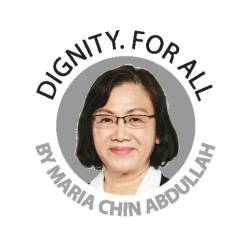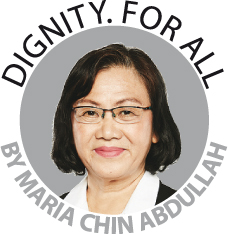MALAYSIA ratified the United Nations Convention on the Rights of the Child (CRC) in 1995. The CRC is an international statement of our commitment towards the protection and welfare of children in Malaysia including upholding their civil, political, economic, social, health and cultural rights.
Yet, despite this, we often hear the question of whether we are doing enough to deal with the problems that are preventing children from reaching their full potential.
In February 2018, the United Nations Children’s Fund (Unicef) released a shocking report that 23% of children living in low-cost flats across Kuala Lumpur suffered from stunted growth, and with 22% being underweight and 32% wasting, or being shorter than the average child their age.
When I encountered this at Lembah Subang Peoples’ Housing Project, I was angered and upset that this was happening right here in Petaling Jaya. I have since started a food bank programme for underprivileged families in the community, and yet there are still so many urban poor areas where children continue to go hungry.
The 2018 child marriage case of a 41-year-old man and an 11-year-old girl made it more urgent to ensure that children are not being pressured and forced by regressive cultural attitudes into dangerous and potentially harmful decisions. Let our children taste the joy of life at their pace, and not face the burden of adulthood. At such tender ages, children should be able to grow up where their social, emotional and educational needs are met. Having a safe and loving home and spending time with family playing, singing, reading, and talking are very important.
Children also tend to be more affected in divorce or separation cases where divorced fathers do not pay for maintenance despite court orders being issued. Additionally, the burden then falls on the wife to return to the court to ensure that the order is enforced, which can be slow and a financial nightmare.
This would explain why many cases are eventually dropped as it is easier to give up their claim than to pursue it. Sisters in Islam’s free legal clinic Telenisa for example records that 32.5% of cases it handled involved financial support for wives and 52% of cases that involved children also covered child maintenance issues.
These examples illustrate the complexity and vast scope in the protecting the rights of children. What’s more, it is clear that enforcement of provisions under the Child Act 2001 and other legislation like the Sexual Offences Against Children Act 2017 has been lacking.
The Ministry of Women, Family and Community Development has taken some important steps to improve the overall protection of children.
This includes the introduction of a sexual offenders registry list, approved daycare centres at government offices, and recently the introduction of a series of videos to educate children on sexual awareness.
Yet the protection of the rights of children requires more. Currently, this task falls under the purview of a department within the Social Welfare Department, and their resources are already severely strained.
The government has stated that it intends to establish a new commission to resolve issues relating to the protection of children’s rights, however there is no timeframe for when this will be established.
Instead of creating a new structure which requires law reform, perhaps strengthening the work of Suhakam’s Office of the Children’s Commissioner (OCC) will not only speed up the plans but deepen the efforts to advance child rights.
The OCC should focus on the protection and promotion of the rights of children and must be independent of all political interference. Preferably it will be empowered to present reports to the Parliament as this will build the office to become a credible authoritative voice for children’s rights and allow Parliament to hold the government accountable in the implementation of law affecting children.
Reporting directly to Parliament and having a separate budget would also allow the OCC to ensure that children receive the basic support that they need based on international standards and as stated in the CRC, not just based on government directives or under the provisions of the Child Act 2001.
It is also important to note that the role of the commission is bigger than just reviewing the effectiveness of legislation. The office should also help children understand their rights so that they have a role in influencing the decisions that shape their lives.
The commissioner represents the voice of the children, and must be able to get a holistic picture of the situation and concerns of young people.
A Children4Change poll by Unicef 2017 revealed that almost seven in 10 children in Malaysia worry about issues relating to bullying. The OCC should therefore come up with suggestions and mechanisms that help address these concerns.
The lack of representation of children on issues that directly impact their future can be seen with the right to use technology. Access to technology is a modern right and yet children in underserved communities are often unrepresented in conversations about the use of technology and exposure to the media and internet.
More than this, the commissioner particularly represents children who are vulnerable or who find it hard to make their views known. To push the boundaries, the OCC can extend its scope to include all children in Malaysia including the stateless, refugees, asylum seekers and migrant children. For too long, we have stood by as they face discrimination as a result of their status, with limited access to healthcare and education, vulnerability to abuse and exploitation and other violation of their rights.
The OCC must ensure that the rights of children are respected and must be allowed to report directly to Parliament. We certainly do not want a commissioner that has to work with one hand tied. Strengthening the Suhakam’s OCC will reflect the firm commitment of the government towards the promotion and protection of child rights.
Comments: letters@thesundaily.com














